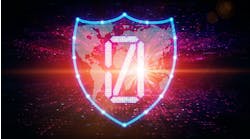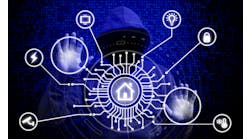The Code, Protection, and Safety: Bonding and Grounding of Customer Service
The NEC®, published by the National Fire Protection Association® (NFPA®), is related to fire and electrical safety. The NEC® by definition is not intended to address most lightning protection concerns. Requirements above the NEC® basics need to be applied to bring lightning protection to acceptable levels.
Don’t Ignore the Basics
NEC® section 250.94 in the 2008 edition introduced the intersystem bonding termination (IBT) required for new buildings, new structures, and new installations, and permitted at existing locations.
The IBT is a bonding and grounding device required to have 3 or more ports securely mounted and electrically connected to structure AC power service equipment:
• Meter box enclosure
• Nonflexible metal AC main service conduit
• Main AC service disconnect enclosure; or uses minimum #6 AWG copper conductor to connect to the grounding electrode conductor.
The IBT provides a common bonding and grounding device to be used for metallic members of optical fiber cables; telephone network interface device (NID)/protectors and metallic members; antenna systems; CATV shields/protection, network-powered broadband network interface units (NIUs); and premises-powered broadband fiber-to-the-premises (FTTP) optical network terminals (ONTs) (NEC® Articles 770 and 800–840).
Existing customer installations without the IBTs need to bond/ground to the AC power service (NEC® section 250.94 prior to the 2008 edition and the indicated articles). In the absence of an IBT, the first choice is for the technician to bond/ground to the power service electrode ground, or to the grounding electrode conductor to the power service electrode ground (not to an unbonded enclosing conduit).
The technician must not use the buried electrical service metal service raceway conduit, since power utility cable locators will cut off the ground connection to allow proper cable location. Note: The NEC® allows connection to a metal water line entrance that is bonded to the AC power service. This choice needs to be avoided due to issues encountered historically with nonmetallic plumbing replacements or with corrosion-insulating joints.
Articles 800, 820, 830, and 840 require the grounding conductor (now called the grounding electrode conductor by the NEC®) not to exceed 20 conductor feet for one- and two-family dwellings. This distance is between the item to be bonded/grounded and the AC power ground either via the IBT or direct to the AC power ground. I recommend this limit be applied to all installations.
The 20-foot grounding conductor limit was first recommended in 1973 within GTE Telephone and originated from Mr. Charlie D. Hansell. Charlie and other electrical protection specialists recognized that conductor self-inductance causes large lightning voltage drops along a conductor. Charlie wanted to limit lightning voltage difference between the internal wiring of a telephone and the AC power. The new-in-the-box telephones were required to meet a minimum 5,000 volts arcing breakdown of the plastic handset and base. Since the station protector was required to be grounded to the AC power service ground, he wanted to subject the conductors entering the station protector to a chosen value of 2,000 amperes with a rise to peak time of 4 microseconds.
He also wanted to keep the voltage drop along the grounding conductor to 5,000 volts, and discovered that the value of 20 conductor feet was just over 5,000 volts.
Since 1973, much more delicate instruments, such as AC-powered fax machines, cordless telephones, and computer modems, have been connected to telephone conductors. The arcing breakdown inside these devices between the telephone conductors and the AC power can be as low as 600 to 800 volts.
I learned in 1989 that even telephones no longer had to meet the minimum 5,000 volts arcing breakdown. They are merely required to meet a maximum resistivity for the plastic being used in the construction, which allowed the arcing breakdown voltage to be as low as 1,100 to 1,200 volts.
To achieve that minimum dielectric strength recommended in 1973, the grounding conductor length needs to be under 5 feet. (See Figures 1 and 2 for installation location and safety analysis.)
The NEC® has Exceptions for one- and two-family dwellings where the 20-foot rule cannot be met because the existing AC power and communications services were placed at widely separated locations on the structure. The Exception allows placement of a communications electrode ground rod with 20-foot (maximum; ideal is 5-foot) grounding conductor imposed from the point of protection to this communications ground rod. Next a minimum #6 AWG copper bonding conductor is required between the communications ground rod and the AC power service ground electrode. The NEC® does not place a limit on the length of this bonding conductor. (See Figure 3.)
While this NEC® Exception does not degrade the AC power fault protection, lightning protection is significantly degraded by each foot of this bonding conductor between the communications ground rod and the AC power service electrode ground. Lightning currents entering either on the communications conductors/shield (See Figure 4.) or on the AC power conductors can result in a customer shock hazard, equipment damage, and potential fire hazard.
FTTP = No Worries?
We might assume FTTP service will eliminate all our protection concerns, but that may be very far from the truth. The optical fiber does not conduct current, but tracer wires and armor on buried drops do. FTTP service with tracer wire or armor terminated to the ONT ground terminal exposes the customer dwelling to the same lightning threats as it had for traditional outside plant cable pair telephone service.
You must realize that the ONT is still AC-powered at the customer dwelling and can be damaged by lightning from tracer wire or armor terminated to the ONT ground terminal. Figure 5 analyzes the fiber optical service following the 20-foot rule. The NEC® allows for exceptions for optical fiber service similar to those for telephone protection.
To avoid protection threats from the drop tracer wires or armor, perform the following:
— Either bond the tracer wire to the power ground electrode (rather than ONT ground terminal), or cap tracer wire with Scotchlok® and bury it in soil at least 4 inches from any metal conductors.
— Open the drop armor with a gap of 4 inches at ground level with the drop at least 4 inches from any metal conductors.
— Some may place the tracer wire or armor inside the ONT without terminating to the ONT ground terminal to avoid the protection problem. This approach must not be used, since 2 different potentials can be present as an electrical shock hazard, and lightning can arc from the tracer wire or armor to damage the ONT and potentially gain a path into the dwelling.
A grounding block must be installed on the coaxial line exiting the ONT, unless the ONT is specifically Listed for adequate grounding of the coaxial line. The coaxial line must have an uninterrupted ground, to drain stray and potentially lethal AC currents.
We have considered ONT locations on the exterior of the building or structure. Exterior-type ONTs may be placed inside, or interior-only ONTs may be chosen. In both situations, the tracer wires or drop armor must not be extended into the dwelling. No coaxial lines, CAT5 or telephone lines from ONT are run outdoors or placed on the outer surface of the structure.
The following 3 different interior installations are permitted.
1. The exterior-type ONT is located inside a dwelling. The NEC® section 250.94 grounding location can be accessed. This allows the ONT grounding conductor to exceed the 20-foot limit, if necessary. The coaxial grounding block will be required if the ONT is not Listed to satisfy this grounding.
2. The exterior-type ONT is located inside a dwelling, but the NEC® section 250.94 grounding location cannot be accessed. In this case, a grounding module such as TII 442 or TII 442C must be secured to a receptacle and used to ground the ONT and coaxial line. With the TII 442, the ONT must be Listed to satisfy the coaxial line grounding. Otherwise the TII 442C can provide the coaxial line grounding with the “F” connectors or a coaxial grounding block used with the TII 442.
3. An inside-type ONT Listed to be grounded by the 3-prong grounding plug. The grounding module must be provided to ground the coaxial line, even if the ONT is disconnected from the power. The TII 442C must be secured to a receptacle and provide the coaxial line ground.
Most of this article addresses telephone station protection and FTTP protection. Please be sure to refer to the NEC® Articles 820 for CATV coaxial line/protection and 830 for Network-Powered Broadband. They have similar grounding and bonding requirements for exterior dwelling-mounted grounding blocks and NIUs.
About the Author
Ryan Rust, Electrical Protection and Grounding Consultant, worked for GTE Telephone for nearly 28 years. Ryan contributed to and authored GTE protection practices related to COs and OSP. He technically supported more than 30 T&P administrators. Ryan can be reached via email: [email protected].
Electric Motion Company is a manufacturer of bonding and grounding hardware for utilities. In addition to their standard product offerings, they also work with customers to develop and produce new or modified hardware that better suits the customer’s needs. For more information, visit www.electricmotioncompany.com.










